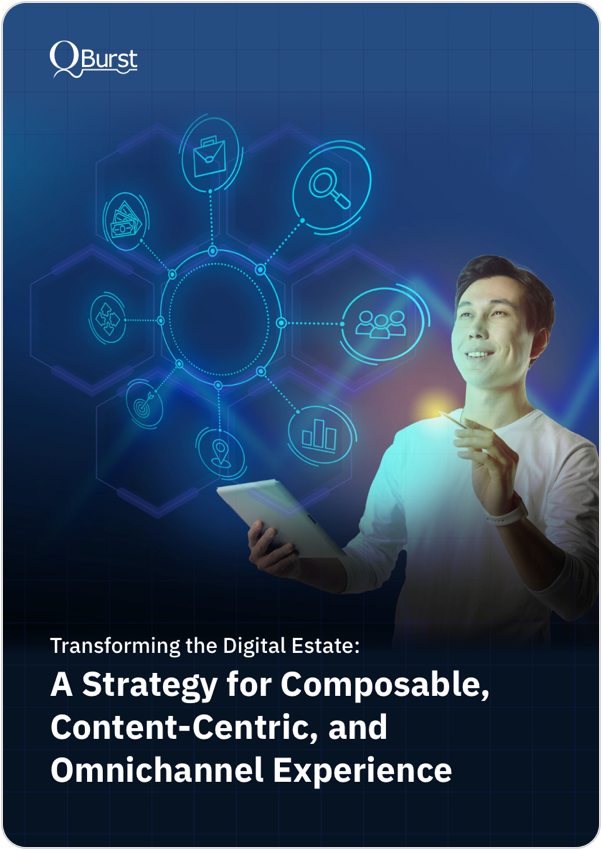Share your requirements and we'll get back to you with how we can help.
Thank you for submitting your request.
We will get back to you shortly.

Break Free From
Costly Monolithic DXPs

Break Free From
Costly Monolithic DXPs
Are costly, rigid digital experience platforms (DXPs) limiting your ability to deliver seamless digital experiences?
A legacy DXP is often a budget sink and an agility roadblock. We can replace that constraint with Strapi's open, headless architecture, decoupling content from rigid delivery. This shift gives your team the flexibility to design the unique, personalized experiences your customers demand.
Read more about this strategic shift in our white paper.
What You Can Achieve with Strapi

Greater
Business Agility
Respond faster to market changes with a flexible content foundation that adapts easily to new channels, technologies, and your customer demands.

Lower Total Cost
of Ownership
Eliminate licensing costs and reduce maintenance overhead. Scale your digital ecosystem efficiently while maintaining budget flexibility.

Better
Operational Efficiency
Simplify content operations and reduce dependency on technical teams, freeing your resources to focus on innovation and growth initiatives.

Stronger
Brand Consistency
Ensure every touchpoint reflects your brand identity and messaging with centralized governance and version-controlled content management.
 Greater Business Agility
Greater Business Agility
Respond faster to market changes with a flexible content foundation that adapts easily to new channels, technologies, and your customer demands.
 Lower Total Cost of Ownership
Lower Total Cost of Ownership
Eliminate licensing costs and reduce maintenance overhead. Scale your digital ecosystem efficiently while maintaining budget flexibility.
 Better Operational Efficiency
Better Operational Efficiency
Simplify content operations and reduce dependency on technical teams, freeing your resources to focus on innovation and growth initiatives.
 Stronger Brand Consistency
Stronger Brand Consistency
Ensure every touchpoint reflects your brand identity and messaging with centralized governance and version-controlled content management.
Get More from Strapi with Our Partnership
As an official Strapi partner, we help enterprises extend Strapi’s flexibility with our robust engineering and integration expertise, enhancing your content management capabilities across diverse digital platforms. Our Strapi enterprise services cover end-to-end implementation: from architecture design and migration to integration and optimization.
We connect Strapi with key business systems such as CRM, PIM, eCommerce, and analytics platforms to create a unified source of truth for content, product, and customer data. This seamless synchronization allows marketing and product teams to act faster, launch campaigns sooner, and maintain consistent messaging across every channel.


Why Strapi is the Smarter Way to Manage Content
Accelerate content delivery across platforms
Stop reworking content for every channel. We provide comprehensive Strapi headless CMS development services to ensure unified content creation and distribution with Strapi’s headless architecture.
Migrate from legacy systems without impacting the customer experience
Transition seamlessly to Strapi with our Strapi migration services. Using our proprietary accelerator, we automate complex migration tasks to maintain data accuracy, minimize errors, and prevent content downtime for your audience.
Ensure enterprise-grade security for client data
As a SOC 2® Type 2–certified platform, Strapi offers privacy, compliance, and protection for your clients’ data with Strapi’s secure APIs, token-based authentication, and controlled access.
Integrate enterprise systems for unified operations
Connect Strapi with platforms like Salesforce, Pimcore, or your custom enterprise system to create a single source of truth for content, customer, and product data, enabling faster decisions and consistent brand experiences.
Accelerated Headless CMS Migration Service
Our Strapi Migration Accelerator simplifies legacy system migration from platforms such as WordPress by automating extraction, restructuring, and validation. It removes the usual friction caused by rigid architectures, plugin dependencies, and complex data. The accelerator, backed by our strong engineering expertise, enables up to 60% faster and more reliable migrations while reducing cost and operational impact.

Insights


